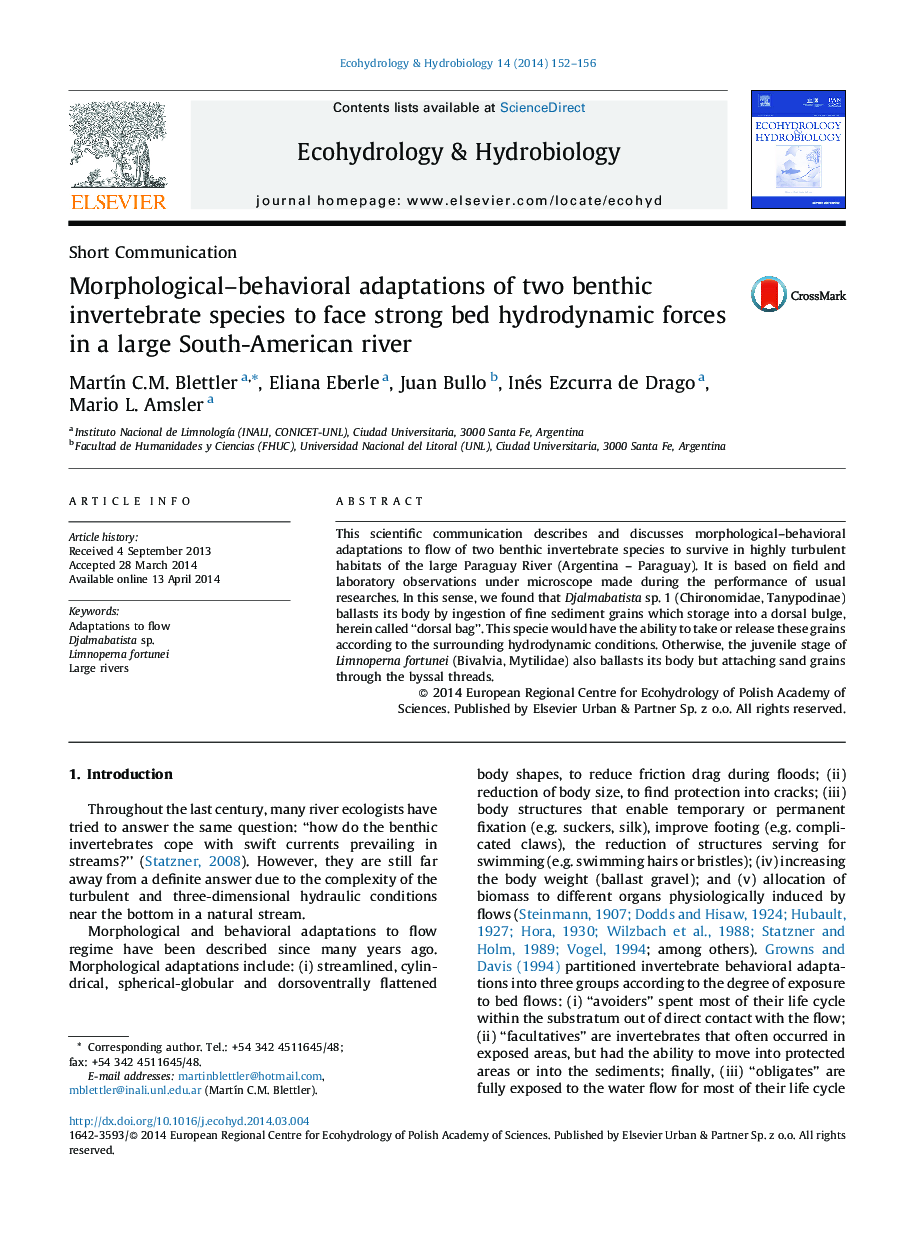| Article ID | Journal | Published Year | Pages | File Type |
|---|---|---|---|---|
| 4388156 | Ecohydrology & Hydrobiology | 2014 | 5 Pages |
Abstract
This scientific communication describes and discusses morphological-behavioral adaptations to flow of two benthic invertebrate species to survive in highly turbulent habitats of the large Paraguay River (Argentina - Paraguay). It is based on field and laboratory observations under microscope made during the performance of usual researches. In this sense, we found that Djalmabatista sp. 1 (Chironomidae, Tanypodinae) ballasts its body by ingestion of fine sediment grains which storage into a dorsal bulge, herein called “dorsal bag”. This specie would have the ability to take or release these grains according to the surrounding hydrodynamic conditions. Otherwise, the juvenile stage of Limnoperna fortunei (Bivalvia, Mytilidae) also ballasts its body but attaching sand grains through the byssal threads.
Keywords
Related Topics
Life Sciences
Agricultural and Biological Sciences
Agricultural and Biological Sciences (General)
Authors
MartÃn C.M. Blettler, Eliana Eberle, Juan Bullo, Inés Ezcurra de Drago, Mario L. Amsler,
